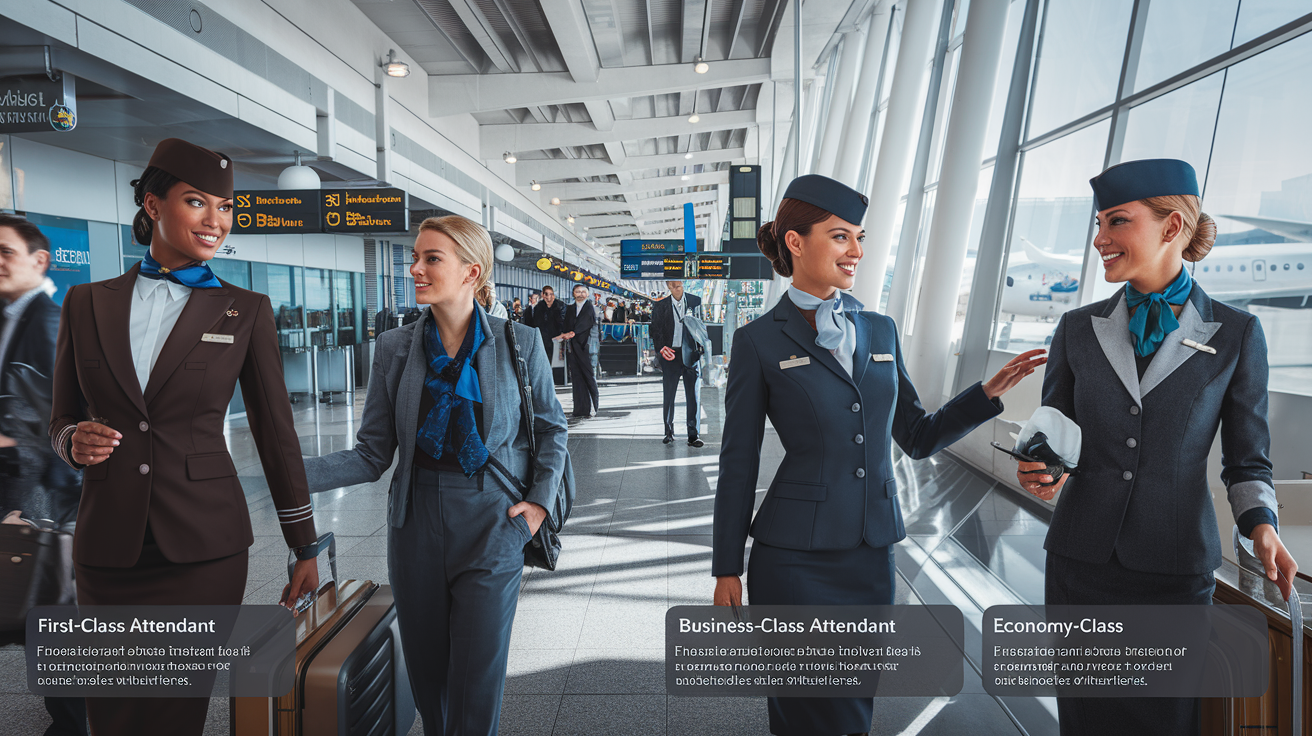Visit Guide Pratique : Reconnaître les Différents Grades du Personnel Navigant Commercial provides a clear overview of the different career paths available. The different ranks, from simple crewman to cabin crew illustrate the progression based on thesenioritythe skills and training. Through definitions and a terminology the guide provides a better understanding of the aeronautical cabin crew job. This essential document highlights the criteria foraccession to senior positions, facilitating detailed career planning for those wishing to specialize in the.
Introduction to cabin crew
In the dynamic world of aviation, the Cabin crew (PNC) plays a crucial role. This group, formerly known simply as stewardesses or stewardesses, is an essential pillar of in-flight passenger safety and comfort. But did you know that within the PNC itself, a specific hierarchy exists? A practical guide to recognizing these different ranks is fundamental to understanding the internal organization on board aircraft.
The main ranks of the PNC
The CNP is made up of various grades, each determined by a set of skills, experience and responsibilities. The main ranks include: flight attendant/steward, cabin crewand main cabin crew. These levels differ not only in their role in the flight service, but also in the authority they exercise over the crew.
Flight attendant
Flight attendants form the backbone of the cabin crew. They are primarily responsible for passenger safety and comfort. Their main mission, beyond on-board service, is to manage emergency situations and ensure clear, effective communication with passengers. This grade is often the entry point into the cabin crew world.
The Cabin Manager
The Cabin Manager acts as supervisor to the flight attendants. He/she ensures that on-board operations are carried out in accordance with safety instructions and company standards. Progression to this role requires solid experience and a certain level of seniority within the company, as well as proven team management skills.
Chief Cabin Crew
At the top of the PNC hierarchy, we find the Chief Cabin Crew. This role is often reserved for the most experienced and competent members of the crew, who are assured of total mastery of safety procedures and proven leadership skills. In the event of unforeseen events, he or she is often responsible for coordinating cabin crew interventions and liaising with the captain.
Grade Progression Processes
Progression through the ranks is not simply a question of seniority. It requires ongoing training and the passing of certain qualifying examinations. These theoretical and practical tests ensure that each member of the cabin crew is capable of performing his or her role competently and efficiently. Seniority within the company can influence the choice of assignment for each grade, in accordance with internal regulations.
Tools and Resources for the CNP
Guides such as the "Guide Pratique du Personnel Navigant Commercial" (Practical Guide for Flight Attendants) are invaluable resources for anyone aspiring to a career in the CNP. These guides provide precise information on definitions, orders of magnitude and aeronautical jargon. For experienced members, these books help hone the skills required for more responsible roles.
For more information on the various careers in the CNP and the prospects for progression, you can consult resources such as the Practical guide: Identifying the different grades of airline pilots.

| Grade | Description |
| Hostess/Steward | In charge of on-board safety |
| Cabin Manager | Crew supervision |
| Chief Cabin Crew | Coordinates several teams |
| Instructor | Train new members |
| Air Safety Manager | Ensures compliance with procedures |
| PNC Coordinator | Plan and manage the workforce |
| PNC Team Leader | Handles complex situations |
| Manager PNC | Ensures overall smooth running of operations |




